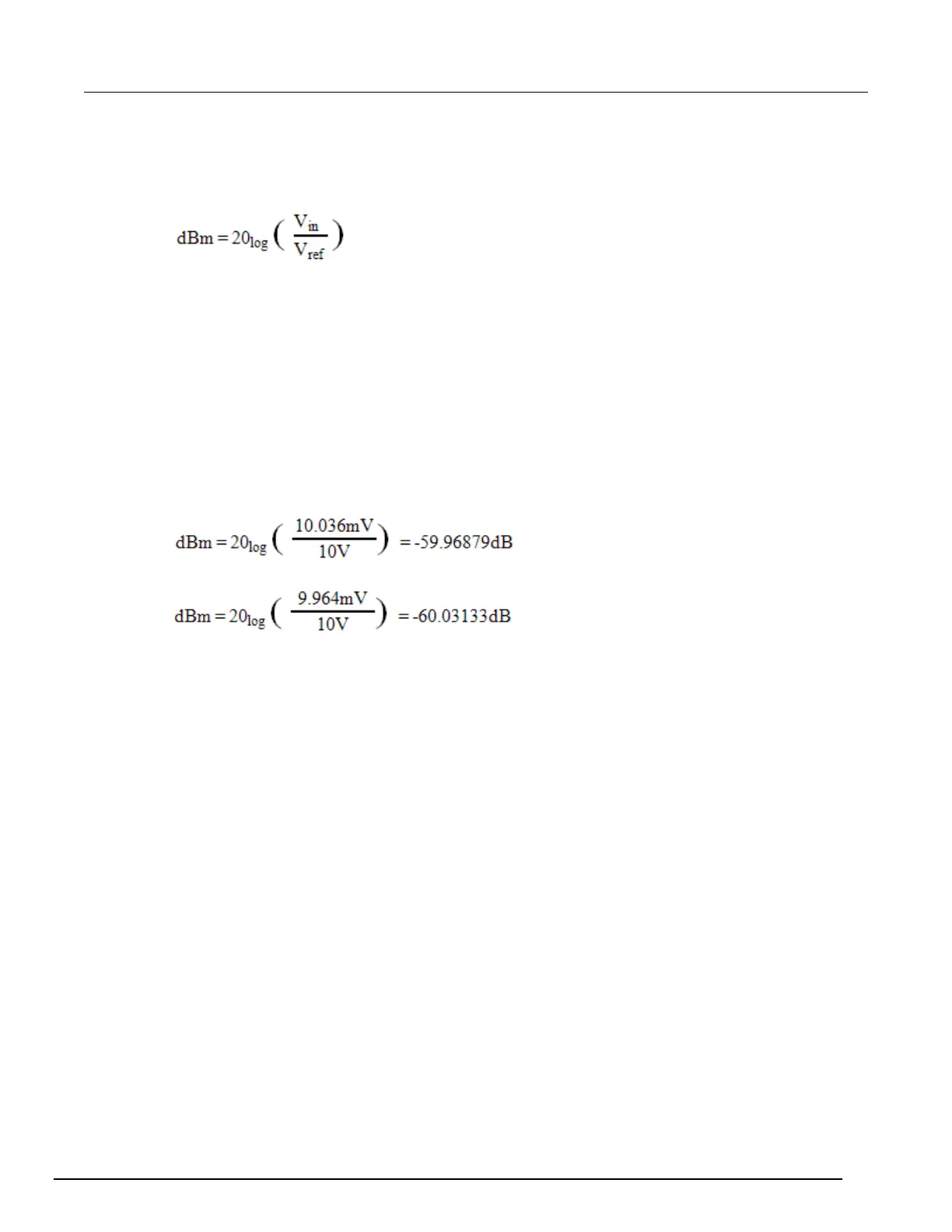Calculating dB characteristics accuracy
The relationship between voltage and dB is as follows:
As an example of how to calculate the actual readings limits for dB, with a user-defined VREF of
10 V, you must calculate the voltage accuracy and apply it to the above equation.
To calculate a –60 dB measurement, assume 10 mV
RMS
for a V
REF
of 10 V. Using the 100 mV range,
one-year, 10 Hz to 20 kHz frequency band, and SLOW rate, the voltage limits are as follows:
Thus, the actual reading accuracy is 10 mV ±36 mV or 10.036 mV to 9.964 mV. Applying the voltage
reading accuracy into the dB equation yields:
Thus, the actual reading accuracy is 60 dB + 0.031213 dB to 60 dB - 0.031326 dB.
dBm and dB for other voltage inputs can be calculated in exactly the same manner using pertinent
specifications, ranges, and other reference voltages.
Additional derating factors
In some cases, additional derating factors must be applied to calculate certain accuracy values. For
example, an additional derating for the following conditions:
1. –0.4 mV with open inputs and the 10 MΩ divider enabled
2. ±(8 ppm or reading + 5 µV) with autozero off for ±1 °C and ≤10 minutes
3. For 2-wire ohms, add 100 mΩ to "ppm of range" with REL
4. Add 0.1% to 10 MΩ range when measuring through a Series 3700A card >50% relative humidity
Before calculating accuracy, study the associated specifications very carefully to see if any derating
factors apply.

